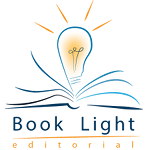On this episode, we are discussing the 2019 remake of Louisa May Alcott’s Little Women. And then we’ll end with a critique of one lucky author’s query.
Summary of this month’s movie:
Here come the spoilers! This movie is about the March family--four sisters, their parents, their aunt--and the dramas of their lives as they move from being teenagers to being adults. In 1868, Jo March is a teacher in New York City, but she also publishes stories in newspapers. After receiving a letter that her younger sister Beth's illness has worsened, Jo returns home.
The movie jumps to seven years earlier, Jo and her three sisters live with their mother, Marmee, in Concord, Massachusetts. Jo meets Laurie, a young man who lives nearby, and he becomes close friends with all the girls--but especially Jo. From there, the film moves between the later timeline, showing how each sister has chosen to live life her way, and the years in between. We see the jealous Amy burn the manuscript of Jo’s novel, each of the girls as they fall in love (or not), Jo pursuing her career as an author, Meg marrying and starting a family, Amy travelling Europe with their aunt and meeting Laurie, and Beth staying home with Marmee and taking care of a nearby family whose children are sick.
The timelines converge when Beth’s illness takes a turn and Meg and Jo return home. Beth dies, reuniting the rest of the characters. Amy and Laurie have married. Jo writes a novel based on the lives of her and her sisters and publishes it. Here, the movie ends differently than the book and previous versions of the movie, with Jo remaining unmarried and opening a school where she and her sisters teach.
Carly: So what did you think about the movie?
Jeni: I enjoyed it for the most part. I’ve never read the book, and this is the first time I’ve seen an adaptation of it. It’s weird because I love Austen and the Brontes, but somehow this book slipped past me growing up. I liked this adaptation, but I think I may have suffered from unrealistic expectations after years of people yelling at me that I need to watch and read Little Women. But looking at the movie on its own merit, it has a lot of things I love--historical setting, strong women who go after what they want, more to life than just getting married. The family relationships were amazing. So real in terms of being both close and also sometimes really hating each other. What did you think?
Carly: So I’m going to be honest here, I’m not sure if I’ve ever read Little Women. I know the story so well, and I think I read it when I was younger, but it is entirely possible that I just saw so many adaptations or read excerpts, that I think I read it. We are bad editors aren’t we? Maybe we should’ve picked a different movie… Oh well, no turning back! Either way I loved this adaptation. The attention to detail, the way they played with sound, it was just impeccably done. The acting was amazing and the script writing was beyond good. The way they all talk to each other, the dialogue, was perfect. It is clear that they are all family, know each other intimately, love each other. Just so well done. And I just love this story. There is so much strength and honesty in it. And we need to talk about the ending in this adaptation. In the book Jo marries Professor Bhaer at the end. This was Louisa May Alcott bowing to the expectations at the time that female characters need to be married off for them to have a satisfying ending. In this story, we see Jo converge into Louisa May Alcott, which makes sense because Jo is semi-autobiographical, and in the movie, Jo writes the original ending, but we get to see that really she ends up pursuing her literary career and holding her book in her hands at the end. Just like the author. It is such a better ending that fits the original story so much better than the one the author was pushed into. Anyway, what did you think this movie did well that authors should take note of?
Jeni: What really stood out to me in this movie was the dual timelines. I’ve read and edited a lot of dual timelines stories over the years, and they can be really hard to pull off. In a nutshell, I think the problem with dual-timeline stories is that you’re essentially telling two stories, but they have to be interconnected. Two big problems: 1) everything that can go wrong with one story can also go wrong here, but double and 2) creating that interconnection is hard by itself. I know several authors who wrote dual-timeline stories as their first novels, and boy, did they set themselves up for a challenge! I think the problem I see most in dual-timeline manuscripts is that both storylines have to be equally engaging. Too often it feels like the author was more interested in one of the timelines than the other, and that comes through as one timeline being boring or even acting like a framing device for the second timeline. In this movie, though, as in well-written dual-timeline novels, both stories are equally interesting. I never felt like, “Ooh, can we hurry up and get back to the other timeline??” I was fully immersed and engaged in what was happening in each.
Carly: Yes exactly. You need to balance both storylines. And it should be noted that the book does not alternate timelines like this. But the movie does it impeccably. You need to balance both timelines in terms of word count too, not just in engagement. It doesn’t have to be exactly 50/50 but it needs to be organized to keep the switches from being jarring. It’s like when you have a dual point of view (POV) novel. You want to balance both so we feel like we spend an equal amount of time with each story. But don’t add “filler” scenes. You need to keep the engagement up like Jeni said. I think one way this movie does it so well is by having the dual timelines mirror each other. It felt like we were learning the context with each scene. We were seeing how their memories and history shape each moment. And we see that life has a way of repeating itself and coming back around. It is all continually tied together in a seamless way. That mirroring and tying of plots makes them interwoven. It feels fluid to transition from one to the other, and we can see both stories building together on the same plot. It doesn’t feel like a jarring transition because they are so interwoven. And I think that is imperative in dual timeline stories. We need to see them build together, not completely separate stories that aren’t linked. Even if the link is separated by centuries or miles, we need to see that they have a common thread and plot that they are building on together.
Jeni: You mentioned transitions between timelines. This was actually one area of the movie I struggled with. It wasn’t always immediately clear when we were transitioning between scenes in the same timeline and when we jumped to the other timeline. In movies, they usually use some kind of visual cue, but in this one, the characters and sets often look more or less the same in both timelines. In a manuscript, it’s actually a little easier because there are several devices you can use. You can put the date at the beginning of each scene. You can keep timelines together by chapter, in other words, only switch timelines when you switch chapters. You can also use an asterisk to separate them, but be careful how often you switch like that. Having several time jumps in one chapter can be really confusing for readers. Also, show how scenes in one timeline are related to the scenes in the other timeline that come before and after. So, in this movie, we start in the more recent timeline, and the other timelines act as flashbacks. The first flashback shows how Jo met Laurie and then proceeds through a few scenes showing him becoming friends with all the sisters. This relates because both Amy and Jo’s storylines are tied to Laurie and because it sets up what Jo thinks of as home--as she is rushing home due to Beth’s illness. So there’s both an internal and external tie between the flashback and the more recent plotlines. It’s also showing the inciting incidents of both timelines.
Carly: So I actually liked how seamless the transitions were, in a movie it was kind of fun to figure out where we were based on context clues. However, I couldn’t agree more with you about not doing that in a book. With books in particular, you are so internally in a character’s head, in a way you aren’t in a movie, that it can be too hard to follow subtle jumps. I always recommend only switching timelines, or even POVs, once a chapter at most. I prefer those changes at chapter breaks. But agreed, character and plot arcs are hard with dual timelines because in most stories the major plot points are going to have to happen in BOTH timelines and still at the normal places (inciting, end of act 1, midpoint, etc). And it can be difficult to have two major events happening at the same time. But don’t forget that you need to do this. Both stories need to build at the same pace. It can be smoothed by having them build together, making them interwoven, as we’ve already discussed. But no matter what, you still need to hit on that structure. That is part of what will make both timelines have equal weight and excitement. It all comes down to making both timelines feel engaging and relevant.
Carly: This month we have a query from a YA high fantasy. In this fantasy we see a hero and heroine play with the trope of the Chosen One as they combat expectations. What did you think?
Jeni: This query is really strong. Consider carefully what details you need in your query, especially when the story takes place in a fictional world. For example, in this query, I don’t think we need to know the name of the village. There’s already a lot of information to take in, and unnecessary details can sometimes make queries harder to connect with. Beyond that, having a little more detail about what obstacles they’ll have to overcome will make your stakes pop more. What’d you think?
Carly: I’m really intrigued by this one! I definitely want to read it. At times the style of the query feels a little stilted or formal with the use of words like “Fortunately, X” instead of flowing right into what we need to know. I felt that there were twinges of humor with the introductions, which I loved, but I wanted to see more of. It feels really strong, but word choice needs to be a little more intentional and less “buzzy.” I think if it works on getting rid of those fillers and emphasizes the voice, it will be ready to go!
On our next podcast we will be discussing the black comedy Parasite. We will also have another query or blurb critique. If you want your query featured on the podcast, you can find the details about how to do that on our Twitter page or below.
You can also find our podcast on our website, storychatradio.com. Or you can follow us on Spotify, iTunes, Google Play Music, or many other streaming services. While you’re there, please leave us a rating. You can also follow us on Twitter and Instagram @StoryChatRadio.

